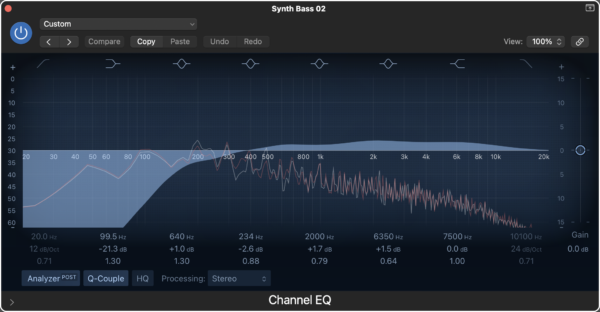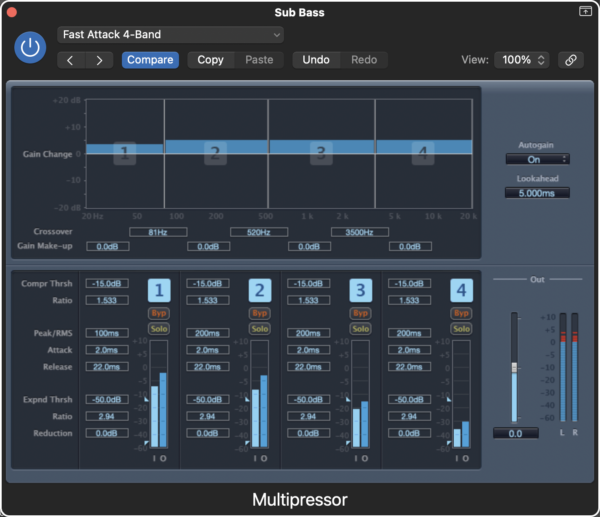
Getting the low end right in a mix can be tricky, especially for beginners. It’s easy to let the bass overwhelm everything or disappear entirely.
But don’t worry—you’re not alone. In fact, almost every new mixer makes the same mistakes with low frequencies.
Let’s dive into the three most common mistakes and, more importantly, how you can fix them.
1. Overboosting the Sub-Bass (20-60 Hz)
When you're first starting out, it’s tempting to crank up those low frequencies.
It feels powerful, right? The problem is that too much sub-bass can quickly turn a mix into a muddy mess. When your kick drum, bass guitar, and synth are all fighting for space down in that 20-60 Hz range, the result is often a low-frequency “soup” that drowns out the rest of the track.
Here’s how to fix it: Instead of boosting the sub-bass, carve out space for each element using EQ.
Start by rolling off unnecessary low frequencies from instruments that don’t need them (like guitars and vocals). A high-pass filter set around 60-80 Hz works well for most non-bass instruments.
Then, focus on defining the role of each low-end instrument. For instance, if the bass guitar is the star of the sub-bass region, slightly cut the same frequencies on your kick drum. This way, each instrument gets its own space to shine.
A great way to test if you’re overdoing the sub-bass is to play the mix through multiple systems—laptop speakers, earbuds, and car stereos. If the bass sounds overwhelming on smaller speakers, you’ve gone too far.

2. Ignoring Phase Issues Between Kick and Bass
Phase issues are one of the most subtle yet destructive problems in low-end mixing.
When your kick and bass are out of phase, they cancel each other out, leading to a weak and hollow low end. The worst part? It’s not always easy to spot because the mix can sound fine on some systems but fall apart on others.
So, how do you know if phase issues are messing with your mix? Start by flipping the phase (often called “polarity”) of either the kick or bass channel and listen to what happens. If the low end suddenly tightens up, that’s your problem. In Logic Pro, you can do this easily by adding the Gain plug-in and checking the “Phase Invert” box.

If phase issues persist, consider time-aligning your kick and bass. Zoom into the waveforms and see if the peaks and troughs are matching up. If not, nudging one of the tracks slightly forward or backward can help.
3. Failing to Control the Low End with Compression
A wild low-end is like an untamed animal—it’s unpredictable and hard to manage.
Without proper control, your bass will jump in and out of the mix, overpowering everything one moment and disappearing the next. This is where compression comes in. But many beginners either don’t use compression on their low-end elements or they over-compress, crushing all the life out of the sound.
The solution? Use compression to smooth out the dynamics of your low-end instruments without killing the vibe. Start by applying gentle compression to your bass and kick with a ratio of 3:1 or 4:1 and a relatively slow attack (around 20-30ms) to let the initial punch come through. Adjust the release time so that the compressor lets go before the next note or hit.
Another pro tip is to use multiband compression to target just the low frequencies (below 100 Hz). This allows you to tame the sub-bass without affecting the punch of the mid-range or top end.

Recap: How to Get Your Low End Right Every Time
- Don’t overboost the subbass. Instead of just turning up the volume, use EQ to carve out space for each low-end element.
- Watch out for phase issues. Flip the phase of either the kick or bass to see if it tightens up the low end. If it does, you’ve found the problem.
- Use compression to control the dynamics. Gentle compression will tame the bass without killing its energy, while multiband compression can target problem frequencies.
By following these steps, you’ll avoid the most common low-end pitfalls and get mixes that sound clear, tight, and professional on every system.
Extra Tip: Reference Your Favorite Mixes
Finally, remember to use reference tracks. Find a song with a low end you love and A/B it with your mix. Pay attention to how the bass and kick are balanced, how much sub-bass there is, and how the low end translates across different systems. Then, tweak your mix to get closer to that reference. It's a game-changer.
Enter your first name and email address and click the "Get Access Now!" button to get your free mixing guide.
Your Information is 100% Secure And Will Never Be Shared With Anyone!
